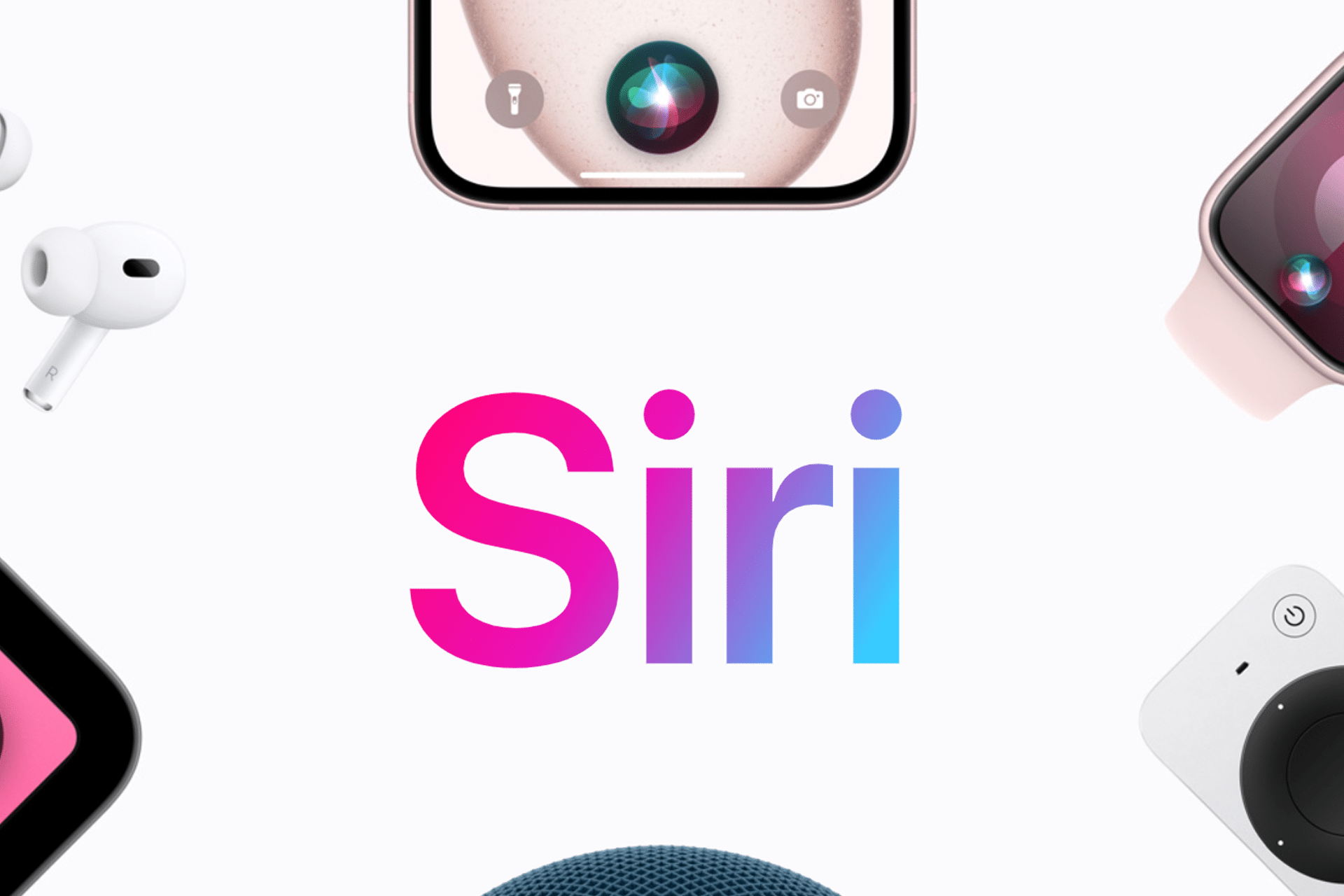Apple’s Siri has been an integral part of its ecosystem for over a decade. As one of the first widely available voice assistants, Siri set the stage for how users should interact with their future devices. However, despite being a leader in mobile operating systems and hardware design, Siri’s evolution has often lagged behind competitors like Google Assistant and Amazon’s Alexa, particularly in the realm of artificial intelligence (AI). But that could change soon.
With the release of iOS 18, Apple has introduced several new features to Siri, some of which show a clear intent to leverage AI in ways that haven’t been seen before. While some of these features are already available, Apple is still working on the most exciting aspects of Siri’s new future capabilities. The three key features—personal context understanding, onscreen awareness, and in-app actions—are still being developed, with the expectation that they will be rolled out in future updates.
This article explores the evolution of Siri in iOS 18, its integration with AI, and the specific features that could potentially change how users interact with their devices. Additionally, we will examine how Apple’s strategic use of AI differentiates Siri from other voice assistants in the market.
Siri’s Evolution in iOS 18
The most significant changes to Siri in iOS 18 might not be immediately apparent to the average user, but they lay the foundation for Siri’s future potential. One of the biggest changes is the design overhaul. Gone is the familiar floating orb that represented Siri’s presence on screen. Instead, Siri’s new design features a glowing edge light that wraps around the screen when activated. This subtle but noticeable design change is more than just an aesthetic upgrade—it signals that Siri is now powered by what Apple calls “Apple Intelligence.”
However, design is just the surface. Siri’s new capabilities go beyond how it looks to how it performs, and Apple has introduced several new features that show off the power of artificial intelligence in Siri’s functionality.

New Siri Features in iOS 18
Apple has introduced 13 new Siri features in iOS 18. While some of these are subtle improvements, others point to a much larger ambition for Siri to become an AI-driven personal assistant capable of responding intelligently to a wide range of requests. Here are the most notable new features:
-
More Resilient Request Handling Siri’s ability to handle requests has been significantly improved. One of the most frustrating limitations of older versions of Siri was its lack of flexibility when it came to miscommunication. If you stumbled over your words or changed your mind mid-sentence, Siri would often require a complete restart of the request. In iOS 18, Siri is far more resilient. For example, if you say, “Siri, set an alarm—wait no, sorry, I meant a timer for 10 minutes—actually, let’s make that 15,” Siri will follow along and adjust the timer accordingly without requiring you to rephrase the request entirely.
-
Maintains Conversational Context Another major enhancement is Siri’s ability to maintain conversational context. Siri now remembers recent interactions, which makes follow-up requests more natural. If you ask, “When are the Warriors playing next?” and then follow up with, “Add that to my calendar,” Siri will understand the context and add the event to your calendar without you needing to repeat details. This advancement in conversational AI is critical for making Siri feel more like a human assistant, capable of understanding the flow of an ongoing conversation.
-
Glowing Edge Light While not a functional upgrade, the glowing edge light is a visual cue to show that Siri is powered by Apple Intelligence. The edge light responds to your voice as you speak, and it moves with your interactions. This is a sleek, futuristic design change that makes Siri feel more integrated with the device, signaling that it is continuously listening and processing your commands.
-
Predictive Text in Siri Keyboard The predictive text feature in Siri’s keyboard is designed to make typing requests faster and more efficient. Instead of typing out your entire question or command, Siri now offers predictive text to help complete your sentence. This is especially useful for those who prefer typing over speaking but still want to benefit from Siri’s capabilities.
-
More Natural Voice One of the most noticeable upgrades to Siri is the improvement in voice quality. Siri’s voice is now more natural, expressive, and clear. The voice is synthesized on-device using Apple Intelligence’s new language models, which eliminates the need for external processing. This results in faster response times and a more human-like tone, making Siri easier to interact with on a day-to-day basis.
-
Product Knowledge Siri now has access to a broader range of product-related knowledge. If you ask Siri about a specific feature of your Apple device or how to use a certain function, it can pull up relevant information from Apple’s extensive support documentation and combine it with its own language models to provide an answer. This makes Siri a more robust assistant for users who want detailed guidance on their Apple products.
-
Type to Siri For users who prefer to type instead of speaking, Siri now offers the ability to type commands at any time. This is a helpful feature for situations where speaking out loud isn’t practical, such as in a quiet environment or when the user is unable to speak. The transition between typing and speaking is seamless, allowing you to choose the method that best fits your needs.
-
Suggestions in Siri Keyboard Siri’s keyboard now provides suggested actions above the text field. These suggestions are based on your past usage and are designed to speed up your interactions. For instance, if you frequently ask Siri to check the weather or set a timer, these options will appear as shortcuts when you open the keyboard. This feature is aimed at reducing the time spent navigating through Siri’s functions and getting things done more efficiently.
-
More Visually Rich Responses Another significant improvement in Siri’s responses is how they are visually presented. When asking about specific topics like the weather, Siri now presents responses that match the look and feel of the app it references. For example, if you ask Siri about the weather, the response will appear as if it were coming directly from the Weather app. This integration provides a more cohesive user experience and makes Siri feel more in tune with the Apple ecosystem.
-
ChatGPT Integration Perhaps the most groundbreaking addition to Siri in iOS 18 is its integration with ChatGPT. When Siri encounters a query that may benefit from ChatGPT’s capabilities, it can seamlessly hand off the request to the language model. ChatGPT is a powerful AI that excels at generating natural language responses, making it an excellent resource for certain types of questions.
However, Siri will always ask for confirmation before sending any data to ChatGPT, ensuring that users are aware of what information is being shared. Once the request is processed, Siri will present the response in a way that is consistent with the rest of its interface. This integration allows Siri to tap into the advanced capabilities of generative AI without completely relying on it, maintaining a balance between Siri’s built-in intelligence and external resources.
What’s Still to Come? The Next Big Siri Features
While the features mentioned above are already available in iOS 18, some of Siri’s most anticipated upgrades have not yet been fully rolled out. These features are expected to arrive in future updates, and they have the potential to redefine how users interact with their Apple devices. The three key features that Apple is still developing are:
- Personal Context Understanding One of the most ambitious features of Siri’s upcoming updates is its ability to understand personal context. With the introduction of Apple Intelligence’s on-device semantic index, Siri will be able to analyze emails, messages, photos, calendar events, files, and more to provide tailored answers. This could allow Siri to respond in more personalized ways based on the specific context of a request.
For example, if you ask Siri, “What was that movie that Jamie told me I should check out?” Siri will be able to pull up the relevant message from your past conversations. Similarly, if you ask Siri to “Add my passport number here,” it could extract the number from a photo of your passport and insert it into the appropriate field. This feature would make Siri an even more indispensable tool for organizing and retrieving information.
-
Onscreen Awareness Another upcoming feature in the future of Siri is its onscreen awareness. This will allow Siri to process and interact with the content on your screen. For example, if you receive a text message from a friend about a new coffee shop in your neighborhood, you can ask Siri, “How long would it take me to walk there from home?” Siri will be able to analyze the text and offer an estimate based on your current location and the location mentioned in the message. This kind of interactivity could make Siri much more versatile and proactive in helping users navigate the information they encounter for future endeavors.
-
In-App Actions Siri’s ability to interact with apps has always been limited, but iOS 18 will introduce significant improvements in this area. Siri will be able to perform hundreds of new actions across both first-party and third-party apps. For instance, if you’re editing a photo in the Photos app, you can ask Siri to “Make this photo warmer,” and Siri will adjust the settings accordingly. Siri will also be able to operate across different apps, such as adding a newly edited photo to a note in the Notes app without needing you to manually switch between apps. This integration would significantly enhance Siri’s ability to act as a central hub for managing tasks across your device.
Why Siri’s Future Matters for Apple
These upcoming Siri features are crucial not only for enhancing the user experience but also for positioning Apple as a leader in the AI space. While other tech companies have made significant strides in generative future AI, Apple has largely avoided relying on it in its core products. Instead, Apple has focused on creating a highly integrated ecosystem where hardware, software, and services work seamlessly together.
The three features—personal context understanding, onscreen awareness, and in-app actions—are AI-driven capabilities that only Apple can provide. This is not because Apple has the most advanced AI technology, but because Apple has the unique advantage of being the platform operator. It controls the hardware, the operating system, and the software, allowing it to build a more cohesive and powerful AI experience than any other company.
For Apple, these Siri upgrades are not just about keeping up with the competition. They are about reinforcing its reputation as the company that prioritizes user privacy and deep integration between its products. By implementing AI on-device, Apple can offer advanced features without compromising user data, something that other companies relying on cloud-based AI systems might struggle with.
The Importance of Getting It Right
As Apple continues to refine Siri’s AI capabilities, there are a few key challenges that it will need to overcome in the future. First, the company must ensure that these new features work reliably across its entire ecosystem. Users expect Siri to function seamlessly on their iPhones, iPads, Macs, and other Apple devices. Any inconsistencies in performance could undermine user trust in the assistant.
Second, Apple needs to strike the right balance between future AI innovation and user privacy. While the new features in iOS 18 represent a significant leap to the future, they also involve the processing of potentially sensitive data, such as emails, photos, and personal messages. Apple will need to make sure that users feel confident that their information is being handled responsibly and securely for future endeavors.
Finally, Siri’s future success will depend on how well Apple can compete with other voice assistants in the markets future. While Siri has always been tightly integrated into the Apple ecosystem, the rise of AI-powered assistants from Google, Amazon, and others means that Apple must continue to innovate to stay ahead.
Apple’s AI Ambitions and the Road Ahead
With the upcoming features and updates, Apple has a chance to redefine what a voice assistant can do. By integrating advanced AI technologies while preserving its core values of privacy and user control, Apple could position Siri as the go-to assistant for users who want a smarter, more personalized experience across all their devices. As Siri’s AI capabilities continue to evolve, it will be interesting to see how Apple’s approach to artificial intelligence shapes the future of voice assistants and AI-powered devices. The next few years will be pivotal for Siri’s development and Apple’s role in the AI landscape.









